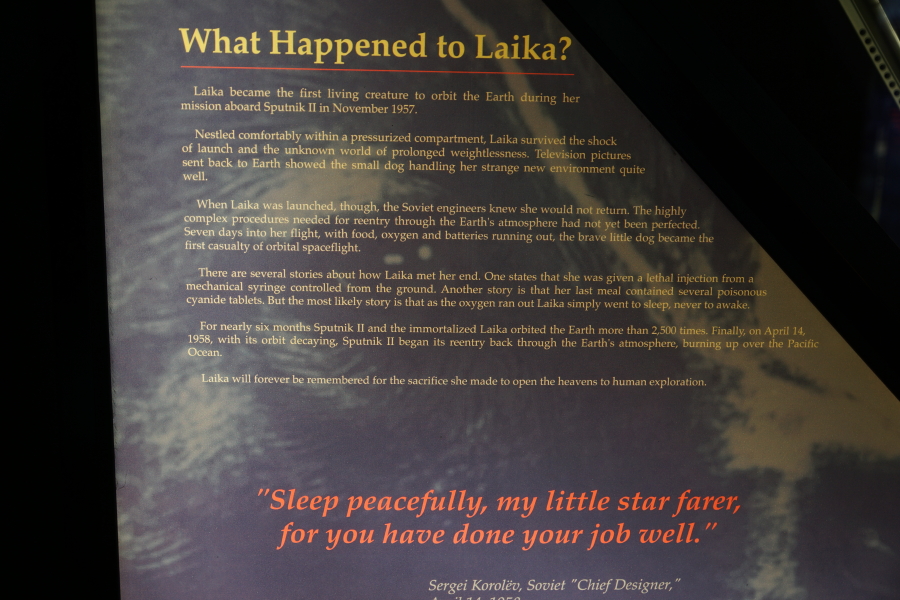| Prev |
heroicrelics.org Kansas Cosmosphere Site Index First Satellites Gallery |
Next |
dscc5440.jpg
The sign accompanying the Sputnik II model. It reads
What Happened to Laika?
Laika became the first living creature to orbit the Earth during her mission aboard Sputnik II in November 1957.
Nested comfortably within a pressurized compartment, Laika survived the shock of launch and the unknown world of prolonged weightlessness. Television pictures sent back to Earth showed a small dog handling her strange new environment quite well.
When Laika was launched, though, the Soviet engineers knew she would not return. The highly complex procedures needed for reentry through the Earth's atmosphere had not yet been perfected. Seven days into her flight, with food, oxygen, and batteries running out, the brave little dog became the first casualty of orbital spaceflight.
There are several stories about how Laika made her end. One states that she was given a lethal injection from a mechanical syringe controlled from the ground. Another story is that her last mean contained several poisonous cyanide tables. But the most likely story is that as the oxygen ran out Laika simply went to sleep, never to awake.
For nearly six months Sputnik II and the immortalized Laika orbited the Earth more than 2,500 times. Finally, on April 14, 1958, with its orbit decaying, Sputnik II began its reentry back through the Earth's atmosphere, burning up over the Pacific Ocean.
Laika will forever be remembered for the sacrifice she made to open the heavens to human exploration.
In October 2002, D.C. Malashenkov, who worked on the Sputnik II program, delivered a paper to the Second World Congress which stated that Soviet scientists noted a gradual increase in temperature and humidity in the cabin during the early portion of the flight. There was a failure of the telemetry system after five to seven hours of flight and they were unable to "detect a status of the dog since the fourth orbit." Although the life support system was designed for seven days of flight, ground simulations showed that Laika likely died of overheating on the third or fourth orbit because "it was practically impossible to create a reliable temperature control system" in the time allotted for development of the spacecraft.

| Time picture taken | Thu Apr 14 14:17:10 2016 |
| Location picture taken |
Cold War Gallery Space Hall Kansas Cosmosphere Hutchinson, KS |
| Prev |
heroicrelics.org Kansas Cosmosphere Site Index First Satellites Gallery |
Next |